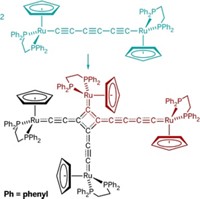Advertisement
Grab your lab coat. Let's get started
Welcome!
Welcome!
Create an account below to get 6 C&EN articles per month, receive newsletters and more - all free.
It seems this is your first time logging in online. Please enter the following information to continue.
As an ACS member you automatically get access to this site. All we need is few more details to create your reading experience.
Not you? Sign in with a different account.
Not you? Sign in with a different account.
ERROR 1
ERROR 1
ERROR 2
ERROR 2
ERROR 2
ERROR 2
ERROR 2
Password and Confirm password must match.
If you have an ACS member number, please enter it here so we can link this account to your membership. (optional)
ERROR 2
ACS values your privacy. By submitting your information, you are gaining access to C&EN and subscribing to our weekly newsletter. We use the information you provide to make your reading experience better, and we will never sell your data to third party members.
Synthesis
Light-Triggered Base
Radiation induces reversible cis-trans isomerization
by Carmen Drahl
July 24, 2008

By employing a light-responsive molecular shield, Stefan Hecht and coworkers at Humboldt University, in Berlin, have developed an organic base that can be reversibly switched on and off on demand (Angew. Chem. Int. Ed. 2008, 47, 5968). The controllable process could lead to new applications in chemical surface patterning, the researchers suggest.
Hecht's team used piperidine, a nitrogen-containing six-membered ring, as the starting point for their reversible base. By adding a substituent to the nitrogen, they effectively locked its basic lone pair of electrons into place. They then incorporated a photoisomerizable azobenzene tether tipped with a bulky aromatic ring.
Short-wavelength light (365 nm) causes the azobenzene to adopt a cis form that leaves the nitrogen's basic lone pair sterically accessible (right). Long-wavelength light beyond 400 nm regenerates the trans form, which blocks access to the lone pair, rendering the base inactive (left). The research complements recent work directed by Neil R. Branda of Simon Fraser University, in Burnaby, British Columbia, which used light to tune acidity by altering a Lewis acid's electronic properties (Angew. Chem. Int. Ed. 2008, 47, 5034).





Join the conversation
Contact the reporter
Submit a Letter to the Editor for publication
Engage with us on Twitter